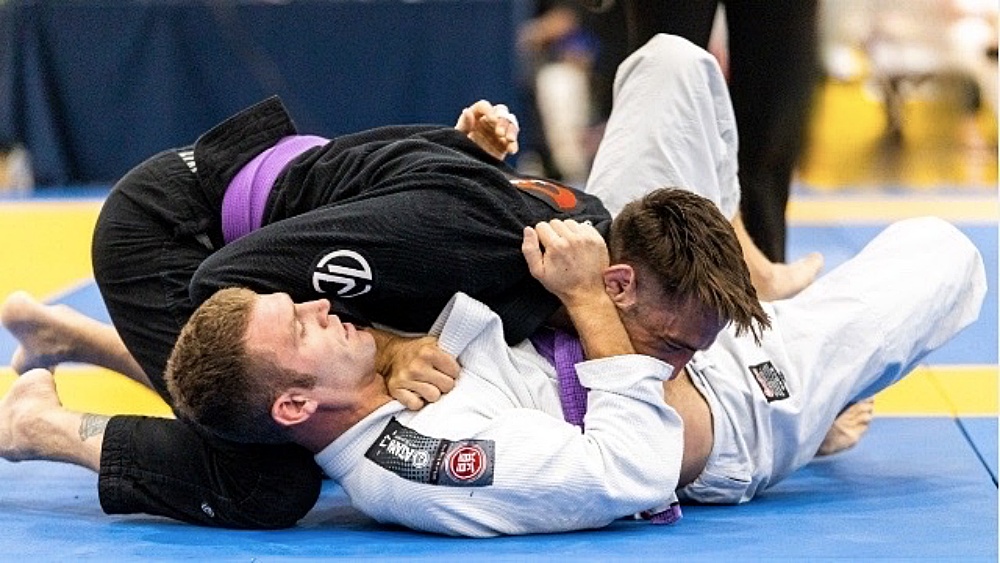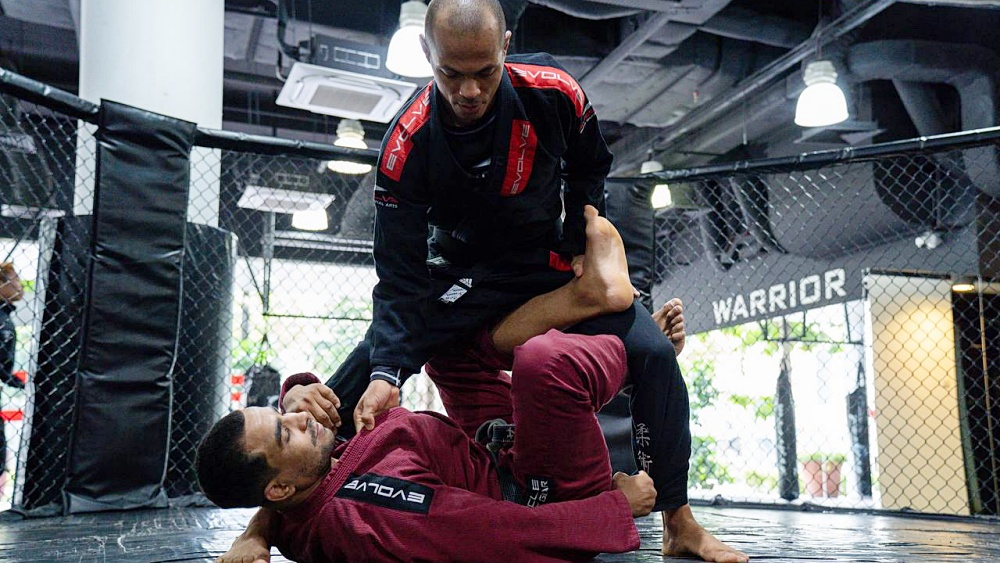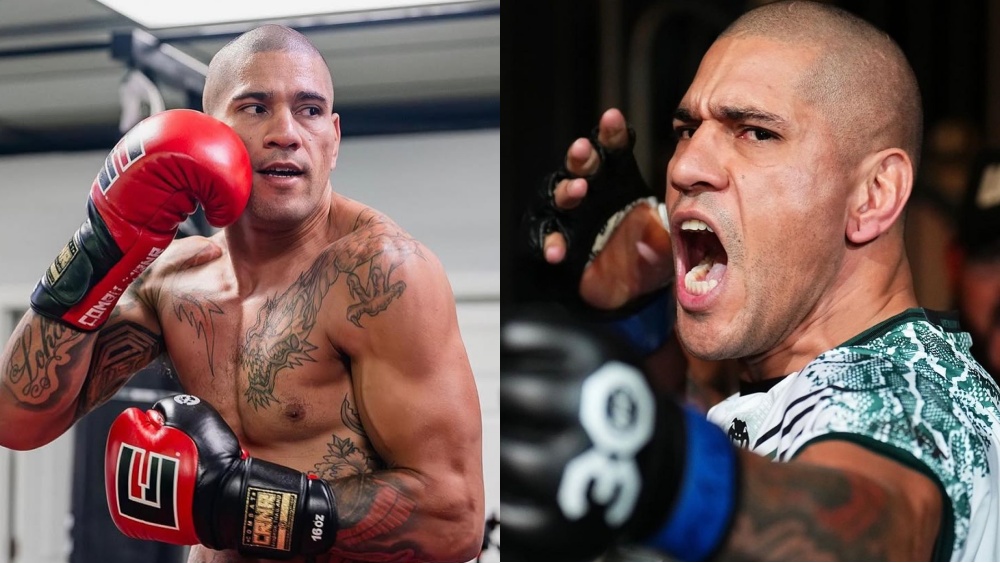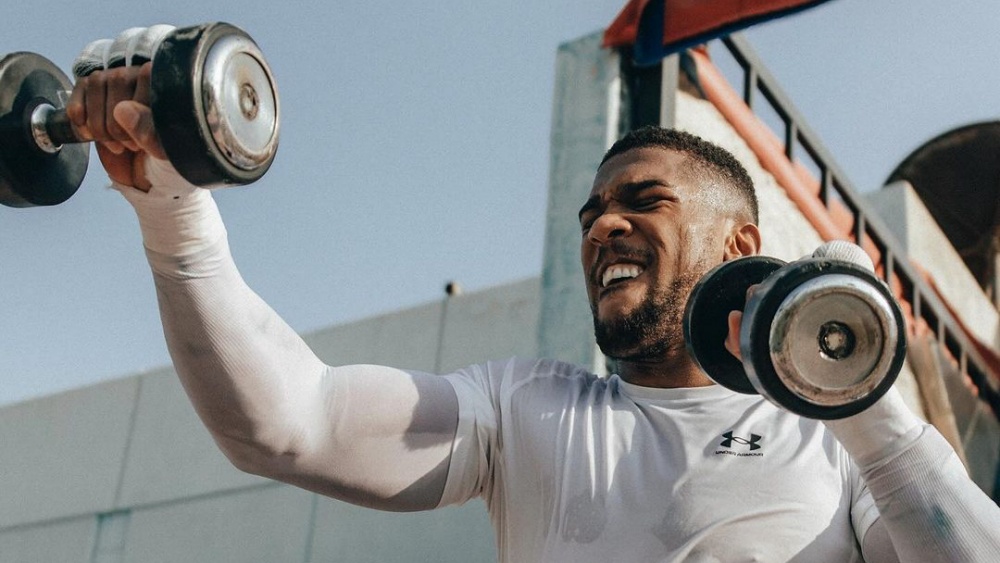Brazilian Jiu-Jitsu (BJJ) is a martial art that places a significant emphasis on ground fighting and submission holds. It is a sport that requires not only physical strength but also strategic thinking and technical prowess. Among the myriad techniques in BJJ, the paper cutter choke is a simple and effective submission that can prove useful in both training and competition. This article will delve into everything you need to know about the paper cutter choke in BJJ, from its setup and execution to common mistakes and defensive strategies.
Understanding The Paper Cutter Choke
The paper cutter choke, also known as the ‘bread cutter choke’ or ‘cross choke‘, is a submission technique that targets the opponent’s neck. The name comes from the action that resembles the cutting motion of a paper cutter, where one arm puts pressure on the neck while the other arm pulls in the opposite direction. This choke is a testament to the strategic nature of BJJ, where leverage and technique can overcome brute strength.
The Importance Of Chokes In BJJ
Before we delve into the specifics of the paper cutter choke, it’s essential to understand the role of chokes in BJJ. Chokes are a type of submission that restricts blood flow to the brain, leading to unconsciousness if not released. They are a crucial part of BJJ and are often preferred over joint locks because they can be applied safely in training without causing injury.
Setting Up The Paper Cutter Choke
The paper cutter choke is typically set up from side control or knee-on-belly position. The practitioner secures one arm under the opponent’s head, gripping the collar with an overhand grip. This grip is crucial as it forms the base of the choke. The other hand goes under the opponent’s arm, grabbing the other side of the collar with the palm down. This grip is the ‘cutting’ part of the choke.
BJJ blackbelt Jeff Glover explains the mechanics of the technique in this video. Notice that it does not require a lot of steps to execute. Get to the side as you control the opponent, use your arm to slide across the neck as you grip the collar. The key to this technique is bypassing the defending hand. We suggest you remain patient with this as the opponent will do whatever it takes to not get tapped.
The Mechanics Of The Choke
The effectiveness of the paper cutter choke lies in the combination of pulling and pushing forces. The hand under the head pulls the collar, creating tension and reducing the space around the neck. Simultaneously, the other hand pushes down, applying pressure on the neck. This dual action restricts blood flow to the brain, leading to a submission.
The paper cutter choke is primarily an air choke (but can be a blood choke depending on the angle), meaning that the aim is to restrict the breathing of the opponent. Once you get a good bite on the neck, it doesn’t take much effort to force the tap if you use proper technique.
Typical Mistakes And Considerations
One common mistake when executing the paper cutter choke is not getting a deep enough grip on the collar. A shallow grip reduces the effectiveness of the choke and makes it easier for the opponent to defend. To correct this, ensure that your grip is deep, with your fingers reaching as far back as possible.
Another mistake is not applying enough pressure with the forearm. Some practitioners focus too much on the pulling action and neglect the importance of the downward pressure. Remember, the choke comes from the combination of both actions.
A third common mistake is rushing the choke. Like all techniques in BJJ, the paper cutter choke requires patience. If you rush the choke, you may not have the correct positioning or grip, and your opponent may escape. Take your time to secure your grips and position before applying the choke.
Defending Against The Paper Cutter Choke
Defending against the paper cutter choke involves recognizing the setup and reacting quickly. If an opponent secures a grip on your collar, it’s crucial to disrupt their setup by breaking the grip or changing your position.
Another defensive strategy is to protect your neck by tucking your chin and using your hands to defend. This can buy you some time to escape or reverse the position.
It’s also important to remember the principle of ‘position before submission’ in BJJ. If you maintain a good position and prevent your opponent from establishing control, you can prevent the choke from being applied in the first place.
Incorporating The Paper Cutter Choke Into Your Game
The paper cutter choke is a versatile technique that can be incorporated into various strategies. It can be used as a direct attack or as a setup for other techniques. For instance, if an opponent defends against the choke, they may expose themselves to arm locks or other submissions.
Practicing the paper cutter choke can also improve other aspects of your BJJ game. It can enhance your understanding of grips, body positioning, and the concept of pressure. Moreover, it can teach you to be patient and wait for the right moment to apply a submission.
Conclusion
The paper cutter choke is a powerful tool in the arsenal of any BJJ practitioner. It requires precision, timing, and understanding of the mechanics to execute effectively. Like any technique in BJJ, it requires practice to master. So, the next time you’re on the mats, consider working on your paper cutter choke – it could be the game-changer you’ve been looking for.
Remember, BJJ is a journey, and every technique learned is a step forward on that journey. Whether you’re a white belt just starting out or a black belt with years of experience, there’s always something new to learn and improve. So keep training, keep learning, and keep improving. The journey is the reward.
Please note that this is a simplified explanation of the paper cutter choke. Mastery of a technique is all about hands-on instruction and months of repetition. Always remember to practice grappling techniques under the supervision of a qualified instructor to ensure safety and effectiveness.
Book your complimentary trial class with our World Champions below!
If you have any other questions regarding Evolve MMA and the programs we offer, you can get in touch with our membership executives at the following locations:
Evolve MMA (Far East Square)
26 China Street
Far East Square #01-01
Singapore 049568
Phone: (65) 6536 4525
Evolve MMA (Orchard Central)
181 Orchard Road
#06-01 Orchard Central
Singapore 238896
Phone: (65) 6536 4556
Evolve MMA (KINEX)
11 Tanjong Katong Road
#02-52 KINEX
Singapore 437157
Phone: (65) 6288 2293
Evolve MMA (Clarke Quay Central)
6 Eu Tong Sen Street
#04-18 Clarke Quay Central
Singapore 059817
Phone: (65) 6226 2150
Evolve MMA (Star Vista)
1 Vista Exchange Green
#02-26A The Star Vista
Singapore 138617
Phone: (65) 6539 9590
















